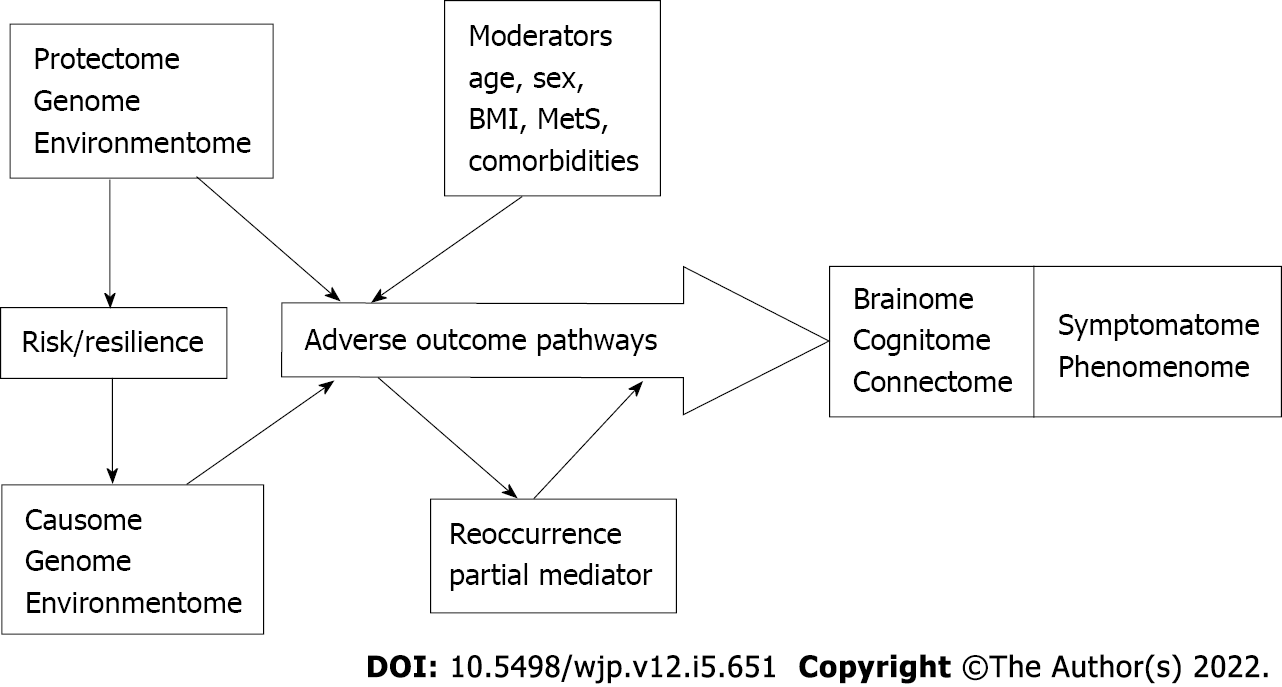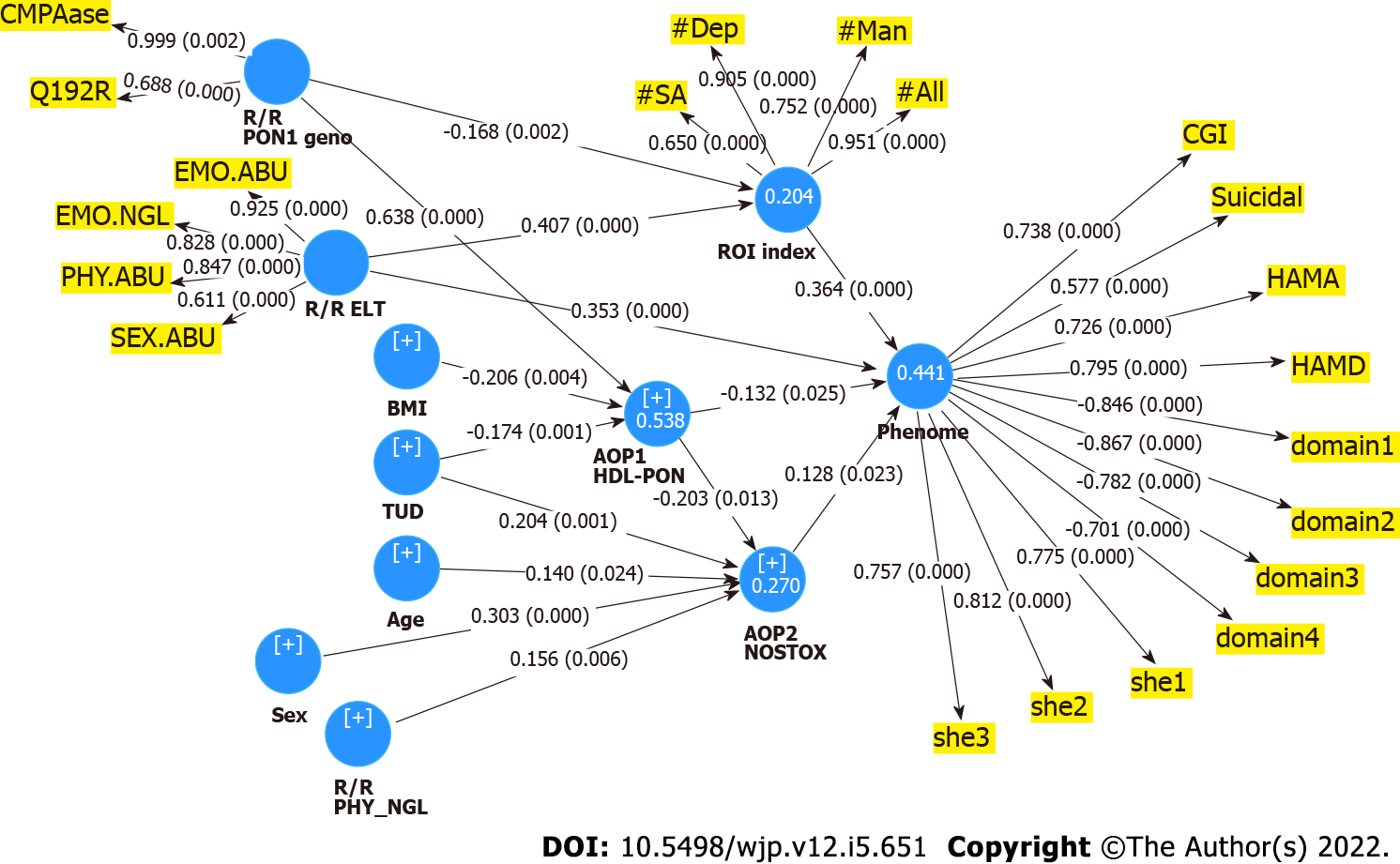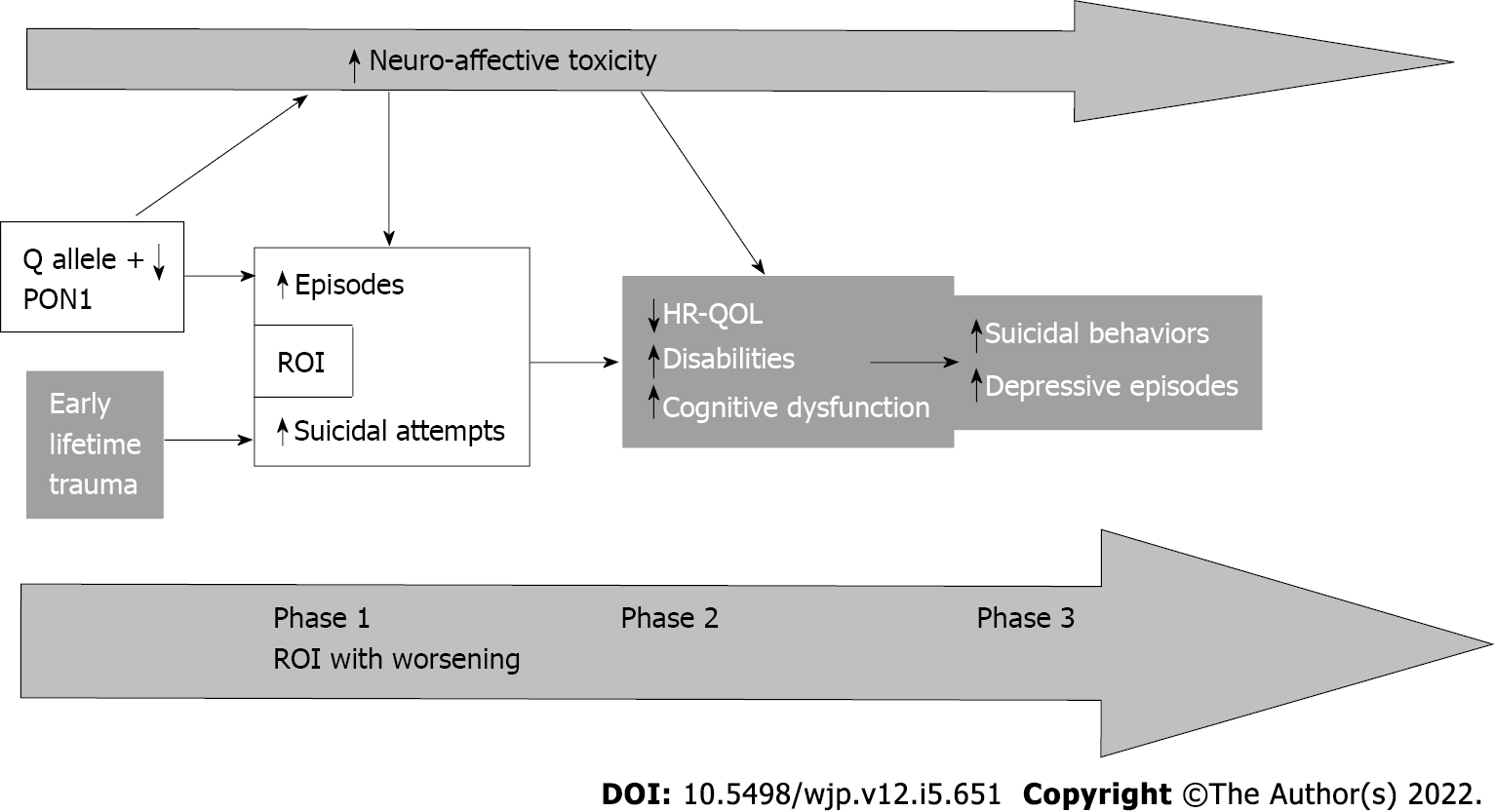Copyright
©The Author(s) 2022.
World J Psychiatry. May 19, 2022; 12(5): 651-667
Published online May 19, 2022. doi: 10.5498/wjp.v12.i5.651
Published online May 19, 2022. doi: 10.5498/wjp.v12.i5.651
Figure 1 Theoretical framework of mood disorders.
Adapted from Maes et al[10]. BMI: Body mass index; Mets: Metabolic syndrome.
Figure 2 Results of partial least squares analysis.
R/R: Risk/resilience; AOP: Adverse outcome pathways; PON1: Paraoxonase; ELT: Early lifetime trauma; EMO.ABU: Emotional abuse; EMO.NEGLECT: Emotional neglect; PHY.ABU: Physical abuse; PHY.NGL: Physical neglect; SEX.ABU: Sexual abuse; BMI: Body mass index; HDL: High density lipoprotein cholesterol; NOSTOX: Nitro-oxidative stress toxicity; ROI: Reoccurrence of illness; Dep: Depressive; Man: (Hypo)mania; SA: Suicide attempts; CGI: Clinical global impression; HAMD/HAMA: Hamilton Depression and Anxiety Rating Scale; Domains (1-4): Domains of the WHO-Quality of Life questionnaire; She (1-3): Sheehan Disability Scale (domains 1-3).
Figure 3 How to construct nomothetic network psychiatry models and disclose new patient clusters.
AOP: Adverse outcome pathways; PLS: Partial least squares; CTA: Confirmatory Tetrad Analysis; NNP: Nomothetic network psychiatry.
Figure 4 Causal links from early lifetime trauma and paraoxonase 1 genotype and enzymatic activity to reoccurrence of illness to phenome including health-related quality of life.
ROI: Reoccurrence of illness; HR-QOL: Health-related quality of life; PON1: Paraoxonase 1.
- Citation: Maes MH, Stoyanov D. False dogmas in mood disorders research: Towards a nomothetic network approach. World J Psychiatry 2022; 12(5): 651-667
- URL: https://www.wjgnet.com/2220-3206/full/v12/i5/651.htm
- DOI: https://dx.doi.org/10.5498/wjp.v12.i5.651
















